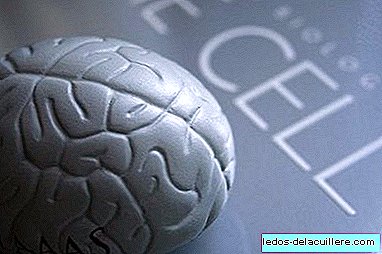
Today we are going to talk about an issue that is quite controversial, especially in the educational field, and that includes a large number of children who have difficulties to be able to correctly acquire the different milestones of normal development, although their general intelligence is preserved. We are talking about the problem of minimal brain dysfunction in children.
The minimal cerebral dysfunction (also known by the acronym DCM) includes all those children who, as said in the previous paragraph, have a normal intellectual capacity but who present some type of alteration in some of the cognitive or behavior, following some kind of alteration in the nervous system.
The different problems that may arise, in addition to a lack of understanding of their real problems by the educational field, society or even within the family, are alterations in language, memory, attention or psychomotor efficiency, among others .
It's important to put attention on minimal brain dysfunction has no well defined limits, but it does include a series of characteristics that can help when knowing what happens to the child. The first of them to keep in mind is that intellectual development is normal.
Another feature that helps identify if a child has minimal brain dysfunction or not is that It is caused by alterations in the nervous system, which manifest themselves in affectations in the psychomotor development of the child, in his development of language and other cognitive aspects.
As is often the case in many childhood disorders, it is very difficult to say 100% sure that a child has minimal brain dysfunction before four years of age, although it is true that there are some risk factors that help clarify a bit what it is What happens to him.
Among these risk factors we can find the presence of alterations during pregnancy, a traumatic birth, perinatal alterations, low birth weight, family history, delayed acquisition of different aspects of development or increased emotional behavioral problems, among Other factors
Minimal brain dysfunction can persist throughout life of the child, although with the passage of time different difficulties (as for example, at the level of learning) usually decrease in intensity, to a greater extent if the problem has been detected in time and an adequate intervention of early attention has been carried out.
It is important to consider that the level of demand that our children have during the school stage usually requires a greater relevance of the learning mechanisms that are often poorly established in children who have the problem at hand.
Among the various alterations that can be found in this broad category we can find psychomotor disorders (such as hyperactivity or gross motor difficulties), learning difficulties, language disorders or emotional or behavioral disorders.
As you can see, in the minimum infantile cerebral dysfunction we can find a varied number of pathologies included in it that share the presence of nervous system disorders in children with normal intelligence.
Currently, the problem of minimal brain dysfunction in children It is a subject that is very up to date, although it is also surrounded by a lot of controversy because, being so diffuse its limit with other problems of the development of children that we can find, there are few people who are reluctant to use this term.
However, no one can deny that professionals in the educational field will often encounter certain children who have some difficulty in perceptual-motor, linguistic, cognitive or behavioral aspects, due to alterations in the nervous system, but who have their intelligence intact, and that it is very important to know how to act with them in order to develop, in an optimal way, all their skills.












